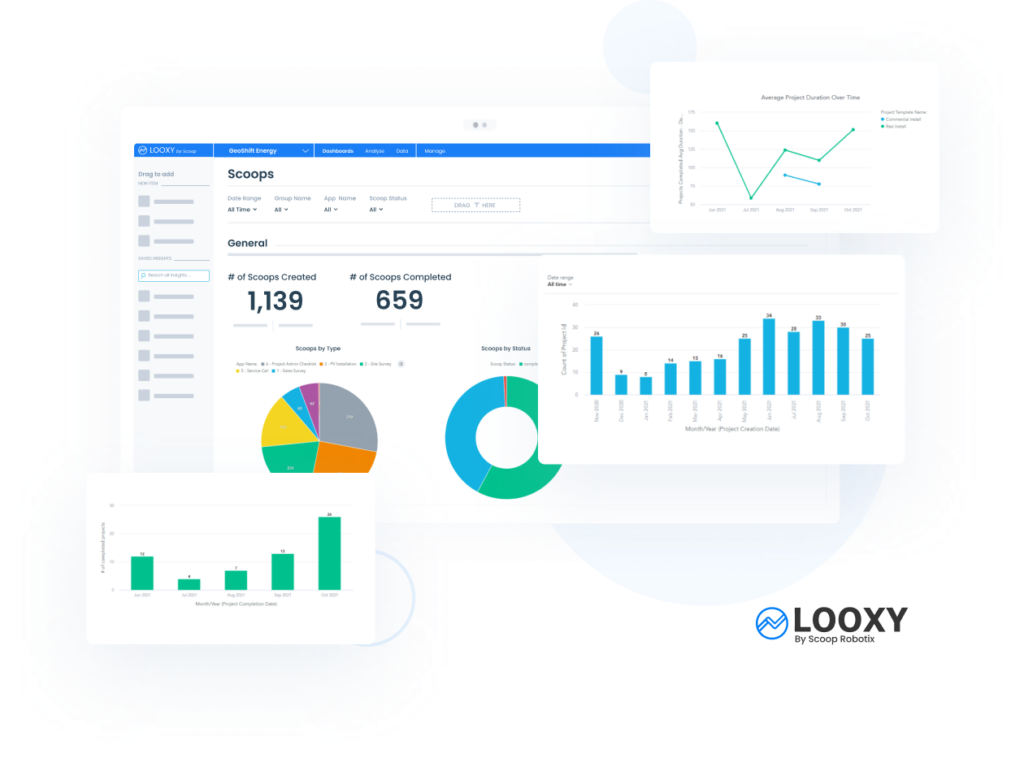The Scoop team is comprised of amazing and passionate people who share a love of advanced technology, renewable energy, and making a positive impact on the world. This week we’re talking to our co-founder and CEO, Babak Sardary, about Scoop’s origins, his philosophy on what makes great field software, and what the future holds for machine learning and AI in the solar industry.
Babak, thanks for joining us to share the Scoop story. Let’s start at the beginning; what started you on the path to co-founding Scoop?
The Scoop story goes back several years. Personally, I have a deep fascination with leading edge technology, and I studied industrial automation and robotics engineering at the University of Waterloo. That opened the door to developing vision guidance systems and process automation for robots in the automotive sector, and later working at Braintech as President and CTO.
So there I was experiencing firsthand the challenges and pressures that managers and field personnel deal with in these highly technical and mission-critical workplaces. And I started to realize that many of these problems could be addressed through better data collection and faster, more clear communication; but the platform to do this properly and flexibly just didn’t exist back then. There was a fundamental gap in software for field workers.
Can you tell us more about the shortfalls you saw?
Well, there’s been a huge shift in the workforce in the past decade, in every industry. Most people don’t work at desks anymore – in fact, field workers account for 80% of the workforce. But their technology needs are often an afterthought. Most software is designed for white collar office employees—despite the enormous potential to do things better using the mobile phones and tablets we all carry. At Scoop we have a ton of experience in field operations in different industries, and we knew we could improve the state of the art.
Early on you chose to focus your efforts on the solar industry and new energy economy. What was behind that decision?
As founders, we wanted to spend our time working on meaningful problems with the potential to have a significant positive impact on society and our planet. The solar industry seemed like a perfect place to focus. Solar generation is playing a massive role in de-carbonizing the grid, but at the same time there are still a lot of old-school methods being used when it comes to installation and maintenance. When we looked at field software in the solar industry, most data is still being collected and shared using outdated and inefficient methods like spreadsheets, pen and paper. But we also found that most people who work in solar are naturally progressive and not afraid to try out better ways of doing things.

It’s definitely a growing industry too, with a lot of established companies expanding into new geographies. That had to be a factor.
Yes, there are a lot of medium-sized solar companies trying to scale up while keeping costs down. We learned that non-hardware soft costs make up about 2/3 of the cost of a new solar system. And so much of controlling their soft costs comes down to the efficiency of their operations, so we saw a big opportunity for field processes to change and embrace worker mobility and connectivity.
For instance, we developed technology to gather and centralize data from sales calls and site surveys, in a way that can be dynamically updated and shared right through to installation and preventative maintenance visits. What I want to say is that our goal has been to not just blindly follow a software category like CRM or Asset Management but instead start from problems that solar companies are facing and build meaningful technology solutions that help them realize immediate improvements in efficiency, profitability, and their ability to take on more projects and grow. Interestingly we have built a flexible platform that gets called all sorts of categories depending on the company using it and how they have configured it to work. At the core of it though we are about enabling the new mobile workforce and helping automate repetitive or manual processes.
So, exploring that a little deeper, Scoop has some guiding principles in terms of what makes great technology. Can you tell us about those?
Sure; we are continuously learning and evolving our thinking on this but so far we have arrived at four basic principles that form the foundation of what we call Mobile Process Management & Automation (mPMA), and the first is that your technology should be a larger tent than it has traditionally been. In other words, it should empower and be for everyone, not just IT or just managers back in the office. Time after time we have seen that when software doesn’t work for a group of employees, people won’t use it, and this breaks things for everyone.
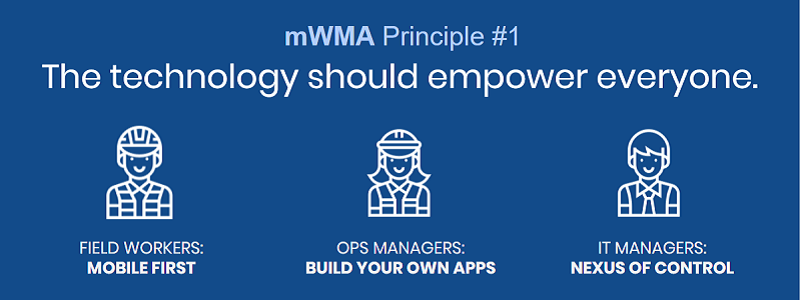
For the field worker this means mobile-first. We want to empower the field workers, making it easy for them to do their job and collect data and communicate wherever they are. For managers it means having the ability to build your own apps. You shouldn’t be tied to a prescriptive way of doing business dictated by their technology provider; rather, you should be able to develop exactly the processes and workflow you need based on your own best practices and as importantly be able to tweak these because your business is not static. And critically, for software to work for IT, it needs to play nice with the rest of the ecosystem and be secure. This means enabling flexible integrations and providing a single point of control.
So by making sure the software delivers value for these specific roles, you’re getting everyone in the company on board using one platform.
Exactly, and that sets you up to build on the second principle which is that software should enable agile collaboration to resolve issues quickly. This is a huge factor in reducing soft costs, because the faster you can identify and fix an issue, the less time and resources it will take. It’s exponentially costlier to miss an issue and have to come back to it later when it raises its head.
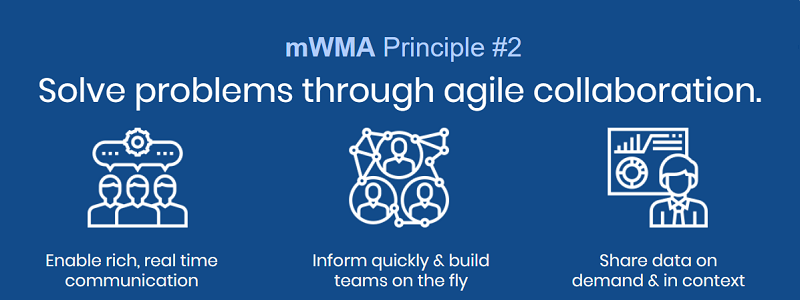
So intelligent software needs to help you identify issues quickly with rich, real-time communication. You need the ability to inform the right people of what’s going on in the field in real time and put the right facilities at their disposal to form agile teams on the fly. And you need to enable them to collaborate to resolve issues quickly with rich, real-time communication/collaboration on demand and in context.
So great field software should deliver value for everyone on the team and help them collaborate in a flexible, agile way.
Right, which leads to the third principle which is that great software is a platform for continuous improvement. The whole concept of apps in this technology is about standardizing and consistently applying best practices. But apps are almost never perfect at first and even if they were your business will change and have different needs. In order for continuous improvement to be more than a buzzword in your company, you need a technology that lets non-IT people who are nonetheless experts in their domain continuously tweak the apps.
With a system like this now you have got a virtuous cycle where every employee is executing work according to the best possible version of that process even if it’s their first week on the job. If they find a better way of doing a step and let their manager know he can immediately reflect that by re-configuring the app and pushing it out instead of weeks and days of back and forth. So the end result is you are getting true actionable continuous improvement and avoiding unnecessary rework, repeat truck rolls by reducing errors, missing site data or incomplete work.
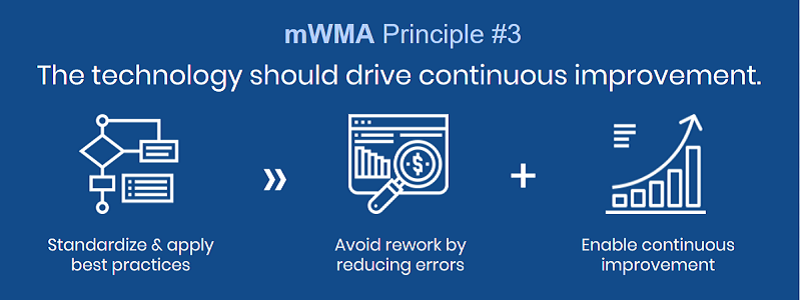
And finally, we feel that software should assist and augment people and help by automating simple things in order to free them to focus time and attention on solving problems and adding value. People are inherently terrible at following routines, so we like to leverage some of the amazing newer technologies like AI and machine learning which are well-geared to learn patterns and lessen the burden on the person.
Does that mean field workers will become dispensable as automation technology replaces them?
Having been part of the AI and robotics community for the past 20 years I can tell you that despite all the buzz and excitement out there, a scenario like that whereby a robot goes out and makes service calls is a long way down the road—although I think that’ll eventually be here. Our philosophy on automation is really human-centric. Where we get mileage from these tools today by acting as an assistant, not a replacement for human workers. Most of the work that is made up of higher value tasks requires high level reasoning and judgement which is not going to be something we can trust to automation for a long time to come. What we’re talking about today are things like workflow automation, automated reminders, predictive maintenance and auto-suggest actions or steps.
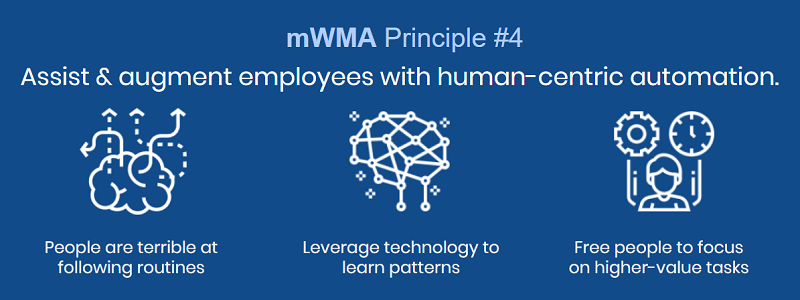
What’s next for Scoop?
We’re always learning from our customers and adapting the platform to their needs, so that’ll be a key driver of our product direction. We’re going to continue to build out features that bring machine learning and AI to the forefront, as well as some really useful field software reporting and analytics capabilities. Another very exciting area is the integration of cloud-based apps which is a challenge a lot of our clients have spoken to us about. Integrations are inherently custom since each company needs the same apps to connect but in different ways. The traditional options to solve this have been less than ideal. So far it has either been out-of-the-box integrations which tend to be very limited or custom integrations that are expensive and hard to maintain.
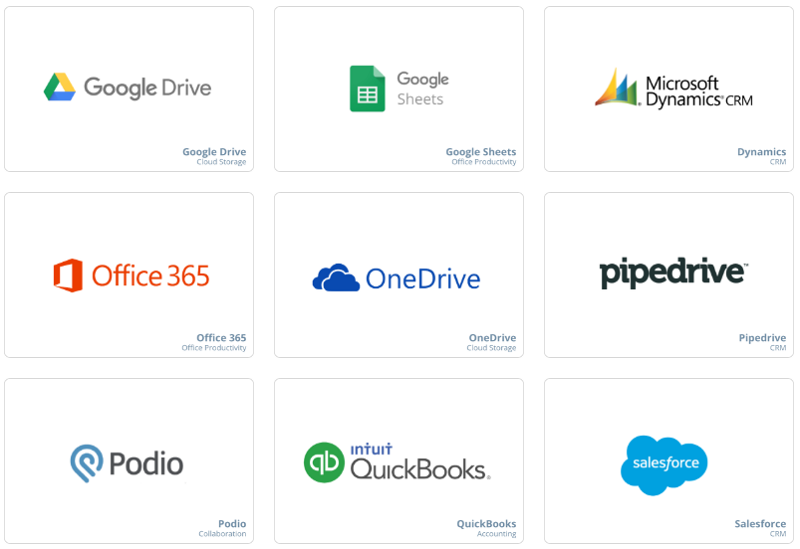
Some of the connectors available through the GLOO service.
Last year we decided to take a rigorous approach to this and bring to market a solution that addresses these limitations. Two weeks ago, we did a limited launch of our new service dubbed GLOO™ to existing customers and our team has already completed several implementations with very good results. Basically, GLOO makes it super easy for companies to get different apps to talk to each other, cost-effectively and in a robust manner, whether they’re using Scoop or not. In the coming weeks we’ll be expanding on this new offering and bringing it to a wider audience. Finally, we are excited about significant upcoming changes and enhancements to our UI to take advantage of more screen real estate and facilitate easier views and workflows.
We’ll be sure to bring all those updates to our blog readers in the coming weeks. Thanks for joining us Babak!
My pleasure; it was fun.

